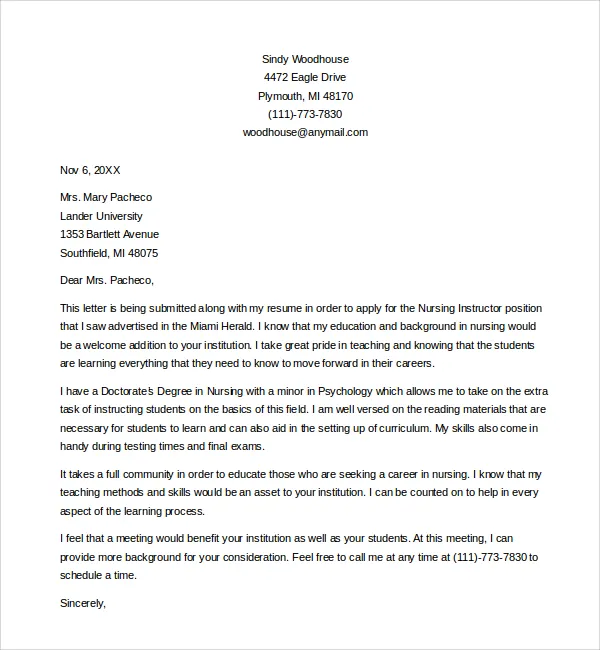Understanding the Faculty Position Cover Letter
A faculty position cover letter is more than just a formality; it’s your first and often most critical opportunity to make a strong impression on the search committee. It serves as a comprehensive introduction, allowing you to showcase your qualifications, research interests, teaching philosophy, and overall suitability for the role. This document is your chance to articulate why you are the ideal candidate, providing a narrative that complements your curriculum vitae (CV) and other application materials. A well-crafted cover letter goes beyond a simple recitation of facts; it demonstrates your understanding of the position, your enthusiasm for the institution, and your vision for contributing to the department and university. Therefore, investing time and effort into creating a compelling cover letter is paramount for success in the academic job market. It is your unique voice, and your chance to shine.
Key Components of a Faculty Cover Letter
A successful faculty cover letter is structured thoughtfully and contains specific elements that highlight your strengths and suitability for the position. Begin by clearly stating the position you are applying for and where you found the advertisement. Your contact information should be readily accessible, including your name, address, phone number, and email address. The introductory paragraph sets the tone, immediately grabbing the reader’s attention and clearly stating your interest. Then, you’ll expand on your academic credentials, research experience, and teaching abilities, aligning them with the requirements of the role. Show how your skills and interests align with the department and university. Finally, a compelling closing paragraph summarizes your key qualifications, reiterates your enthusiasm, and expresses your desire for an interview. This strategic framework is vital for creating a cover letter that effectively represents you.
Your Contact Information
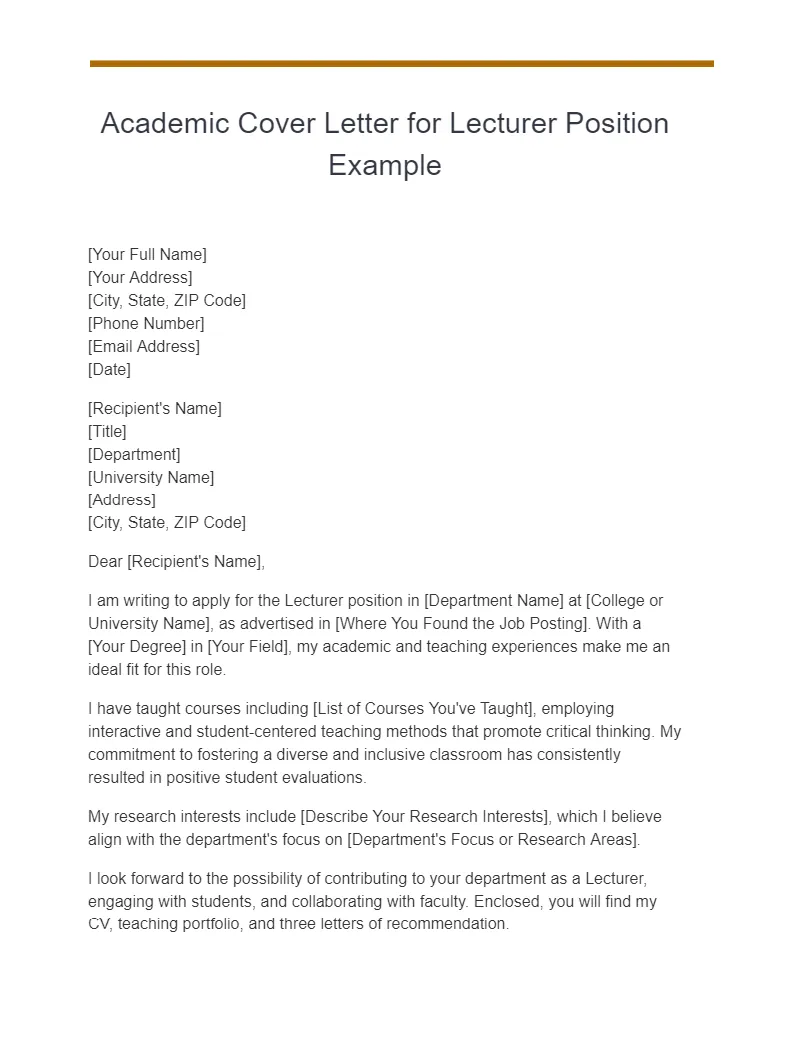
Begin your cover letter by providing your contact information at the top, ensuring easy access for the search committee. Include your full name, current address, phone number, and professional email address. Make sure the email address is professional and easy to read; avoid nicknames or casual language. Presenting your contact information clearly and legibly demonstrates professionalism and attention to detail, essential qualities for an academic position. Always double-check all contact details for accuracy before submitting your cover letter. This crucial step guarantees the search committee can easily reach you, increasing your chances of progressing to the next stage of the application process. Ensure that all details are up to date to avoid any miscommunication or delays in the hiring process.
The Introductory Paragraph
Your introductory paragraph is your first chance to capture the search committee’s attention and make a positive impression. Start by clearly stating the specific faculty position you are applying for and where you discovered the advertisement. Briefly mention your excitement about the opportunity and your alignment with the department’s mission or research focus. This paragraph should be concise, typically 3–4 sentences long, and designed to pique the reader’s interest, encouraging them to read on. Avoid generic openings; personalize your introduction by mentioning something specific about the department or university that resonates with you. A strong opening sets the tone for the rest of your letter, demonstrating your enthusiasm, preparedness, and understanding of the role. This is your first chance to show why you are a good fit.
Highlighting Your Academic Credentials
In the body of your cover letter, provide a concise summary of your educational background, including degrees earned, the institutions attended, and any relevant honors or distinctions. Emphasize your academic achievements and align them with the requirements of the faculty position. If the position emphasizes research, highlight your publications, presentations, and grants received. If teaching is a priority, describe your teaching experience, the courses you have taught, and any teaching awards or positive student evaluations. Be sure to tailor this information to the specific requirements and expectations outlined in the job posting. Mentioning specific coursework, projects, or research experiences that relate directly to the position requirements will strengthen your application and demonstrate your preparedness. Proofread carefully to ensure accuracy and clarity of your academic credentials.
Showcasing Research Experience
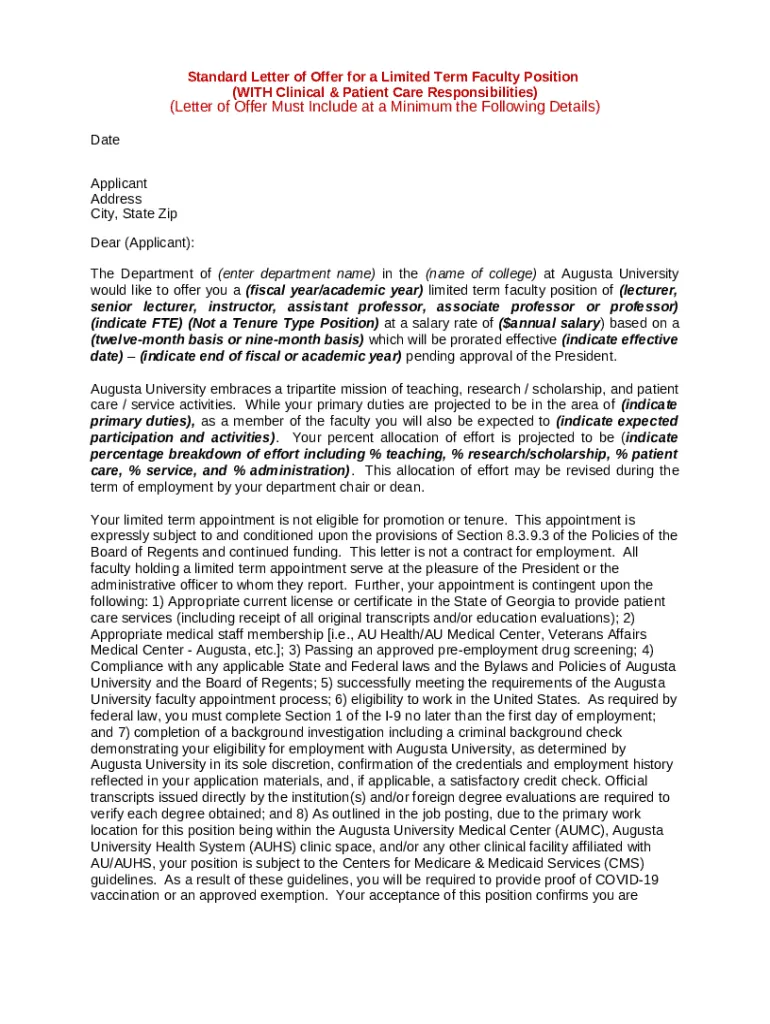
Your research experience is a critical component of your cover letter, especially for positions at research-intensive institutions. Clearly articulate your research interests and how they align with the department’s current research focus. Describe your research projects, methodologies, and findings concisely, highlighting your contributions to the field. Mention publications, presentations, and grants, quantifying your achievements whenever possible (e.g., ‘authored five peer-reviewed publications’). If you’re applying for a lab position, emphasize your experience with specific techniques and equipment. Discuss how your research has contributed to new knowledge or has the potential to advance the field. Focus on the impact of your work and how it aligns with the department’s goals and priorities. This should demonstrate your capacity for independent research and your potential to contribute to the university’s research profile. Use strong action verbs to describe your research activities and make your accomplishments compelling.
Demonstrating Teaching Abilities
For most faculty positions, demonstrating teaching abilities is crucial. Describe your teaching experience, including the courses you have taught, the level of instruction, and your teaching methodologies. If possible, include details on your teaching philosophy and how it aligns with the department’s pedagogical approach. Highlight any innovative teaching methods you have used, such as incorporating technology, active learning techniques, or student engagement strategies. Mention any teaching awards or positive student evaluations. If you don’t have extensive teaching experience, discuss any training, workshops, or mentoring experiences that have prepared you for the role. Illustrate your commitment to student success and your ability to create an engaging and effective learning environment. Providing specific examples of your teaching methods, your ability to assess student learning, and any efforts to improve your teaching skills showcases your dedication to teaching excellence.
Aligning with the Department and University
Demonstrate your understanding of the department and university’s mission, values, and research focus. Research the department’s faculty, their areas of expertise, and any recent publications or initiatives. Mention specific faculty members whose work aligns with your research interests, and explain how you might collaborate with them. Tailor your cover letter to show you have a good understanding of the specific position. Highlight how your skills and experience would contribute to the department’s goals. Mention how you would enhance the diversity of the department and university. This shows your enthusiasm and that you’ve put in the necessary work to fully understand the requirements of the role and institution.
Your Research Interests
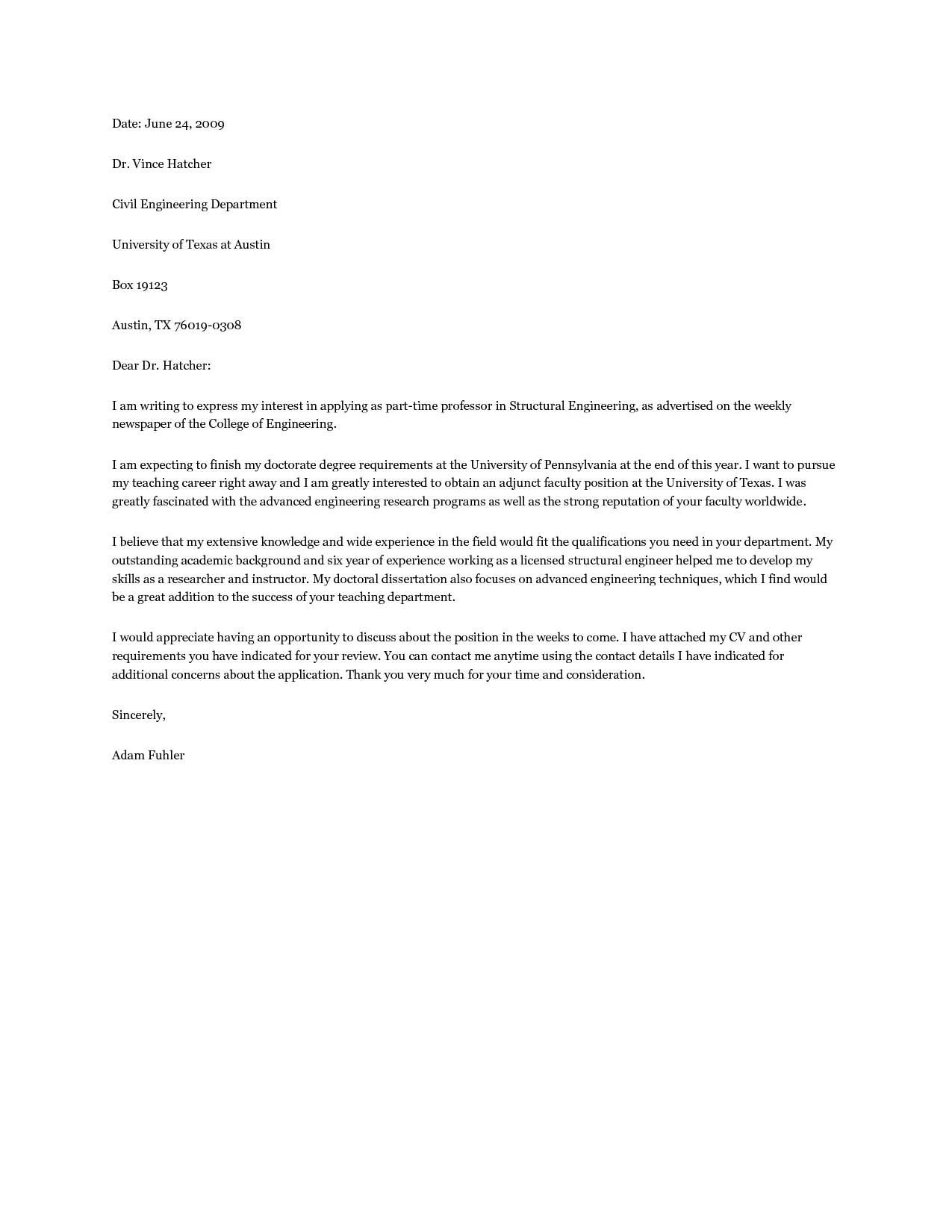
Clearly articulate your current and future research interests and how they align with the department’s strategic priorities. Be specific and provide concrete examples of the research questions you intend to address, the methodologies you plan to use, and the potential impact of your work. Discuss how your research interests complement the ongoing research initiatives within the department. If the position requires interdisciplinary work, highlight your ability to collaborate with researchers from other departments. Show your potential for securing external funding and building a strong research program. Mention any potential collaborations that you envision and how your research interests can enhance the department’s visibility and impact in the field. A well-defined and compelling research vision will strengthen your application significantly.
Your Teaching Philosophy
Your teaching philosophy is a crucial part of your cover letter. Describe your beliefs about teaching and learning, your approach to engaging students, and your strategies for creating a positive learning environment. Articulate your commitment to fostering critical thinking, promoting student engagement, and providing inclusive teaching practices. Discuss how you incorporate assessment methods to measure student understanding and your efforts to incorporate feedback. Provide examples of how you adapt your teaching to diverse student needs and learning styles. Show your experience with different teaching methodologies and how they can support student success. Your teaching philosophy should reflect your passion for teaching and your dedication to student success, demonstrating your ability to be an effective instructor.
Addressing the Search Committee’s Needs
Carefully review the job advertisement and identify the key requirements and expectations of the position. Tailor your cover letter to directly address those needs, providing specific examples of how your skills and experience align with each requirement. Use the same language and keywords from the job posting when appropriate. If the advertisement mentions specific research areas, teaching responsibilities, or departmental goals, explicitly address how you will contribute in these areas. Your cover letter demonstrates your ability to understand and meet the requirements of the role and institution. By aligning your qualifications with the stated needs, you show that you are a good fit and increase your chances of making a positive impression on the search committee.
Professional Tone and Style
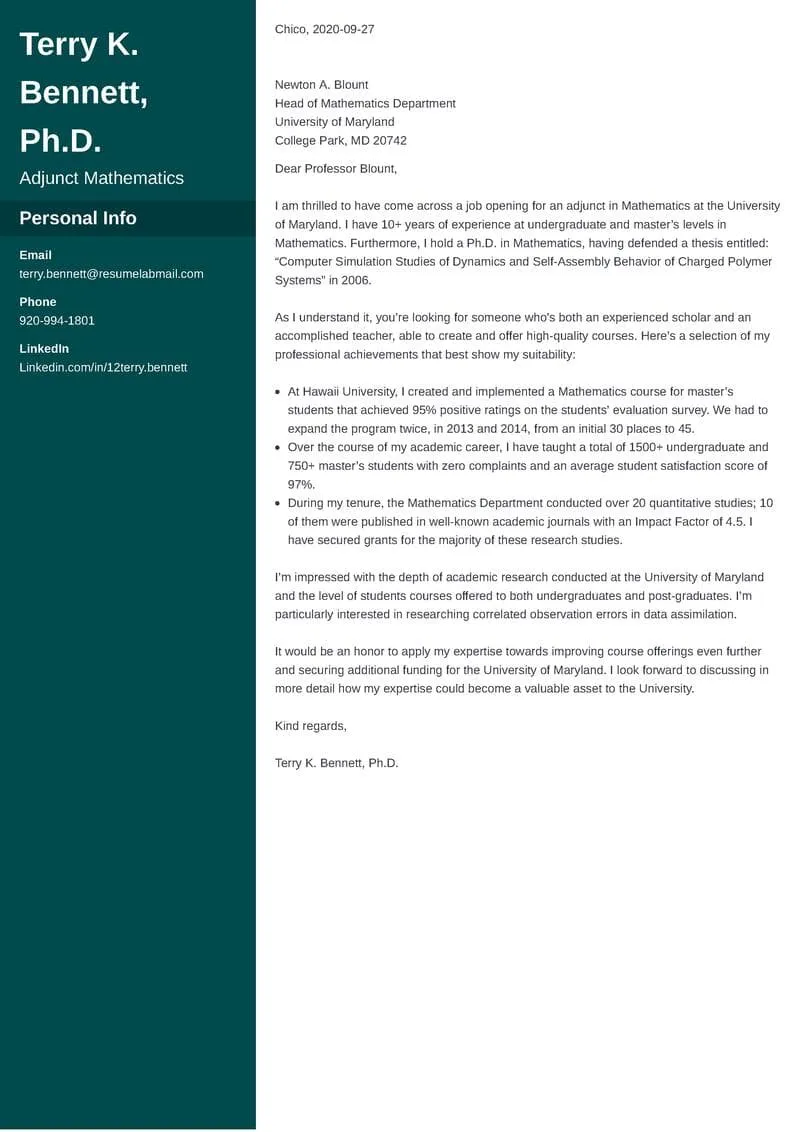
Maintain a professional tone throughout your cover letter. Use formal language, avoid slang or jargon, and proofread carefully for grammatical errors and typos. Keep the letter concise and focused, typically no more than two pages. Use clear and concise language, making your points easy to understand. Adopt a positive and enthusiastic tone, expressing your genuine interest in the position and the institution. Structure your letter logically, with well-defined paragraphs and transitions. Ensure your cover letter is visually appealing, with consistent formatting and appropriate font choices. A professional presentation reflects your attention to detail and your commitment to excellence, leaving a good impression on the search committee.
The Closing Paragraph
Your closing paragraph is the final opportunity to reiterate your interest in the position and thank the search committee for their time and consideration. Summarize your key qualifications and reiterate why you believe you are a good fit for the role. Express your enthusiasm for the opportunity and state your desire for an interview. Provide your contact information again, just to ensure easy access. End with a professional closing, such as ‘Sincerely’ or ‘Respectfully,’ followed by your name. A strong closing paragraph leaves a positive impression and demonstrates your professionalism and eagerness to move forward in the application process. Thanking the committee shows respect for their time and effort.
Proofreading and Editing
Before submitting your cover letter, carefully proofread and edit it to ensure it is free of errors and presents you in the best possible light. Check for grammatical errors, spelling mistakes, and typos. Ensure that the content is clear, concise, and easy to understand. Have a friend, mentor, or career counselor review your cover letter for feedback on content, clarity, and overall effectiveness. Pay attention to the overall flow and ensure that your writing is persuasive and engaging. Proofreading is essential; a polished cover letter demonstrates your attention to detail, professionalism, and commitment to the application process, increasing your chances of success.
